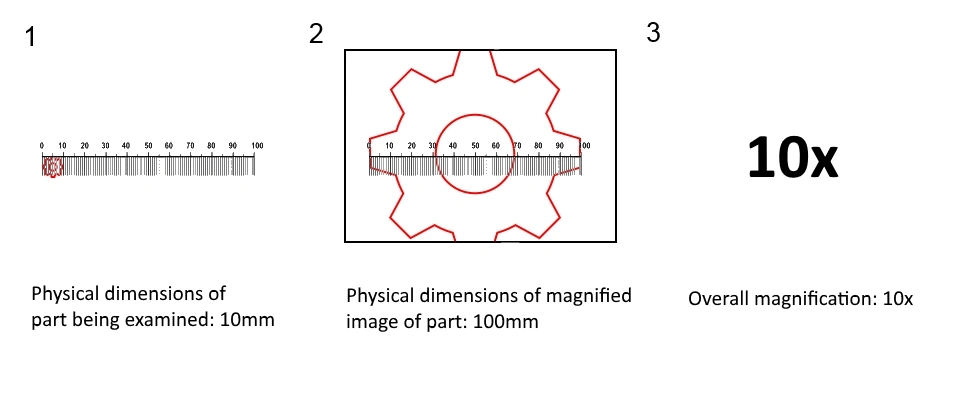- Home
-
FAQ (14)
- Dino-Lite system requirements?
- Measurements and calibration
- Filesize captured by Dino-Lite
- Can I use multiple Dino-Lite devices on a single computer?
- How to: Record a time-lapse
- Do Dino-Lite or Dino-Eye devices store user data?
- How much power does a Dino-Lite use?
- What kind of environment can a Dino-Lite operate in?
- What is the framerate of a Dino-Lite or Dino-Eye device?
- What is a Dino-Eye camera?
- How does magnification differ between traditional and digital microscopes?
- What do the numbers on the microscope dial represent?
- Why does my magnification / measurement sometimes fluctuate?
-
Troubleshooting Windows (15)
- DinoCapture software keeps crashing
- Why is my Dino-Lite missing or not recognized in Windows device Manager?
- What is Error Code 10 on Windows?
- What are Error Codes 19 and 39 on Windows?
- What is Error Code 28 on Windows?
- DinoCapture software window is black
- DinoCapture software opens but camera window is missing
- How do i use an older Dino-Lite with Windows 8, 10 or 11?
- What is Error code 43 on Windows?
- Issues after Windows update
- DinoCapture software screen is missing
- How do i transfer DinoCapture 2.0 files to another Windows PC?
- How do i reset DinoCapture back to default settings?
- Why do i see a "verified apps only" error message in Windows?
- Legacy models and Windows 11
-
Troubleshooting MacOS (8)
- Dino-Lite macOS compatiblity
- Why do i see "Error unidentified developer" on macOS?
- Can i use DinoCapture softwareon macOS?
- Are older Dino-Lite compatible with macOS 10.11 or newer?
- Common issues with DinoXcope software for macOS
- How do i transfer Dinoxcope files to another Mac?
- DinoXcope software does not open
- DinoXcope software screen is black
-
How-to (19)
- How do I use snap mode (edge detection) in DinoCapture
- How do I save location information using a GPS device in DinoCapture 2.0?
- How do I enable DinoCapture's contiuous measurement feature?
- How do I save custom camera settings?
- How do I set the default email program in DinoCapture?
- How to use EDOF (Extended Depth Of Field)
- How do I use custom shortcuts in DinoCapture?
- How to: Record a time-lapse
- How do I transfer DinoCapture 2.0 files to another Windows PC?
- How do I use the auto calibration feature in DinoCapture
- How to use Dino-Lite's DPQ featureto gather depth information
- How do I update DinoCapture?
- How to use eFLC (Enhanced FLC)
- How do I acces DinoCapture's advanced settings?
- How to connect to WF-10 or WF-20 to DinoCapture 2.0
- How do I transfer DinoXcope files to another Mac?
- How do I adjust the color of a Dino-Eye camera?
- How do I find my Dino-Lite model or serial number?
- How to read Dino-Lite model numbers
How does magnification differ between traditional and digital microscopes?
Using a traditional microscope magnification is the ratio of the actual size of the specimen to the size that it appears under the microscope. A digital microscope incorporates a computer and monitor with various physical dimensions and pixel resolutions and also software windows that can be resized to occupy more or less area on the screen.
Comparing optical magnification in traditional and digital devices
The magnification value provided for Dino-Lite microscopes is intended to be useful as a reference to comparable magnification using a traditional microscope but may differ in some cases. A more useful measurement when comparing a digital microscope and a traditional microscope is the field of view (FOV) under a given magnification. This number represents a real dimension and does not change based on variations of monitor size, pixel dimensions, or resizing the software window.

In the image above a sample of the views from a compound microscope and a Dino-Lite are compared. Under this particular setup, the field of view at 40x with the compound microscope was approximately the same as the field of view using the Dino-Lite at 65x. Switching the Dino-Lite display in the software to full screen causes the image to appear larger or more magnified (digital zoom), but the field of view remains the same.
Example 2: Determining actual magnification in digital microscope devicesDue to the differences explained above, it is often more useful to compare field of view rather than magnification. If you have a requirement that you must work at a particular magnification level, you can compare the physical dimensions of the original item being magnified to the resulting size of the item on your display. For example, if the actual dimension of your item is 10mm you can compare that to the size of the item when displayed on your screen in the Dino-Lite software. Adjust the magnification on the Dino-Lite until the item occupies 100mm on your screen for an overall magnification of 10x.

need more help?
The official main distributor and importer for Europe, the Middle-East and Africa.Privacy statement and General Conditions. To withdraw consent use this form copyright © IDCP B.V. - The Netherlands
The official main distributor and importer for Europe, the Middle-East and Africa.Privacy statement and General Conditions. To withdraw consent use this form copyright © IDCP B.V. - The Netherlands
The official main distributor and importer for
Europe, the Middle-East and Africa.
Privacy statement and General Conditions.
To withdraw consent use this form
copyright © IDCP B.V. - The Netherlands













